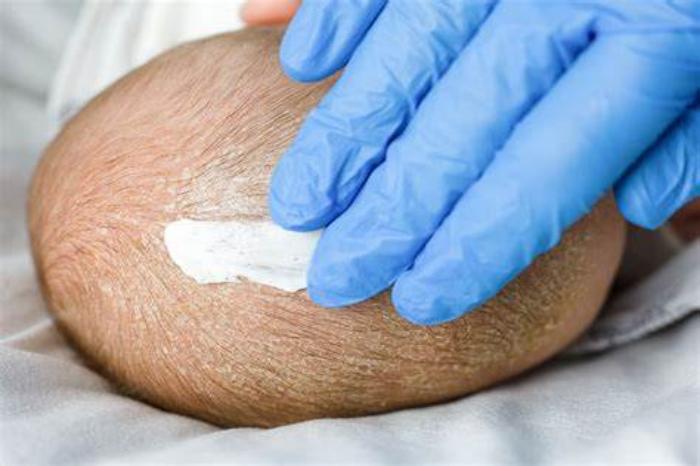Cradle cap, also known as seborrheic dermatitis, is a common skin condition that affects many newborns. It appears as thick, yellowish scales or crusts on the scalp and can sometimes spread to other areas like the face and behind the ears. While cradle cap is usually harmless and resolves on its own, preventing it can help keep your baby’s skin healthy and reduce any discomfort. This article will explore effective strategies to prevent cradle cap and maintain your baby’s scalp health.
Understanding Cradle Cap
What is Cradle Cap?
Cradle cap is a form of seborrheic dermatitis that primarily affects infants. It is characterized by:
Scaly Patches: Thick, yellowish, or white patches of skin on the scalp.
Crusty Texture: The scales can be crusty and sometimes flaky.
Other Areas: It may also appear on the face, ears, or other areas of the body.
Causes of Cradle Cap
The exact cause of cradle cap is not entirely understood, but several factors may contribute:
Overactive Sebaceous Glands: These glands produce oil that can build up on the skin.
Yeast Infection: A yeast-like fungus, Malassezia, may play a role in causing cradle cap.
Hormonal Changes: Hormones from the mother can affect the baby’s skin glands.
Effective Strategies to Prevent Cradle Cap
1. Maintain a Clean Scalp
Regular washing of your baby’s scalp can help prevent the buildup of oils and dead skin cells that contribute to cradle cap.
Gentle Shampoos: Use a mild, baby-friendly shampoo that is free of harsh chemicals. Avoid shampoos with fragrances or dyes.
Frequency: Wash your baby’s hair 2-3 times a week to prevent excessive oil buildup.
2. Use the Right Hairbrush
A soft-bristled brush can help keep your baby’s scalp clean and free from scales.
Soft Bristles: Choose a brush with soft, natural bristles to gently massage the scalp.
Regular Brushing: Brush your baby’s scalp gently before or during bath time to help loosen any flakes.
3. Moisturize the Scalp
Moisturizing can prevent the scalp from becoming too dry, which might help in preventing cradle cap.
Natural Oils: Use a small amount of natural oil, like coconut oil or olive oil, to gently massage the scalp. This can help loosen scales and keep the skin hydrated.
Baby Lotions: Apply a baby lotion or emollient that is safe for sensitive skin.
4. Avoid Overheating
Overheating can exacerbate skin conditions, including cradle cap.
Appropriate Clothing: Dress your baby in comfortable clothing suitable for the room temperature.
Room Temperature: Keep the nursery at a comfortable, cool temperature to avoid overheating.
5. Monitor and Adjust Diet
If you are breastfeeding, your diet can impact your baby’s skin health.
Balanced Diet: Maintain a well-balanced diet rich in vitamins and minerals.
Hydration: Ensure you are well-hydrated, as this can also impact your baby’s skin through breast milk.
6. Addressing Cradle Cap Early
If you notice the early signs of cradle cap, addressing it promptly can prevent it from worsening.
Early Treatment: Use gentle, baby-specific treatments recommended by your pediatrician if needed.
Consultation: If cradle cap persists or seems severe, consult your pediatrician for advice on appropriate treatments.
Additional Tips for Scalp Care
1. Avoid Scratching
Encourage gentle handling of your baby’s scalp to avoid irritation.
No Scratching: Do not scratch or pick at the scales, as this can lead to infection or further irritation.
2. Choose Gentle Products
Select skin and hair care products designed specifically for babies.
Hypoallergenic: Look for hypoallergenic and dermatologist-tested products to minimize the risk of irritation.
Fragrance-Free: Opt for products without added fragrances or colors.
3. Maintain Good Hygiene Practices
Good hygiene practices contribute to overall skin health and can help in preventing cradle cap.
Clean Towels: Use clean towels and washcloths to avoid transferring oils or bacteria to your baby’s skin.
Regular Laundry: Wash baby clothes and bedding regularly to keep them free from excess oils or skin flakes.
4. Be Patient and Consistent
Prevention requires consistency and patience.
Routine Care: Stick to a regular skincare routine to keep your baby’s scalp healthy.
Observe Changes: Pay attention to any changes in your baby’s skin and adjust your routine if necessary.
When to Seek Professional Help
While cradle cap is generally not serious, there are times when professional advice is warranted.
Persistent Symptoms: If cradle cap does not improve with regular care or seems to worsen.
Signs of Infection: If there are signs of infection, such as redness, swelling, or discharge.
See also: How Often Should I Change My Newborn’s Diaper at Night?
Conclusion
Preventing cradle cap involves a combination of gentle scalp care, proper moisturizing, and maintaining a balanced environment. By following these strategies, you can help keep your baby’s scalp healthy and reduce the risk of developing cradle cap. Regular cleaning, using appropriate products, and addressing any issues early on can contribute to overall skin health and comfort for your baby. If you have concerns or if cradle cap persists, consulting with your pediatrician is always a good idea to ensure the best care for your newborn.


